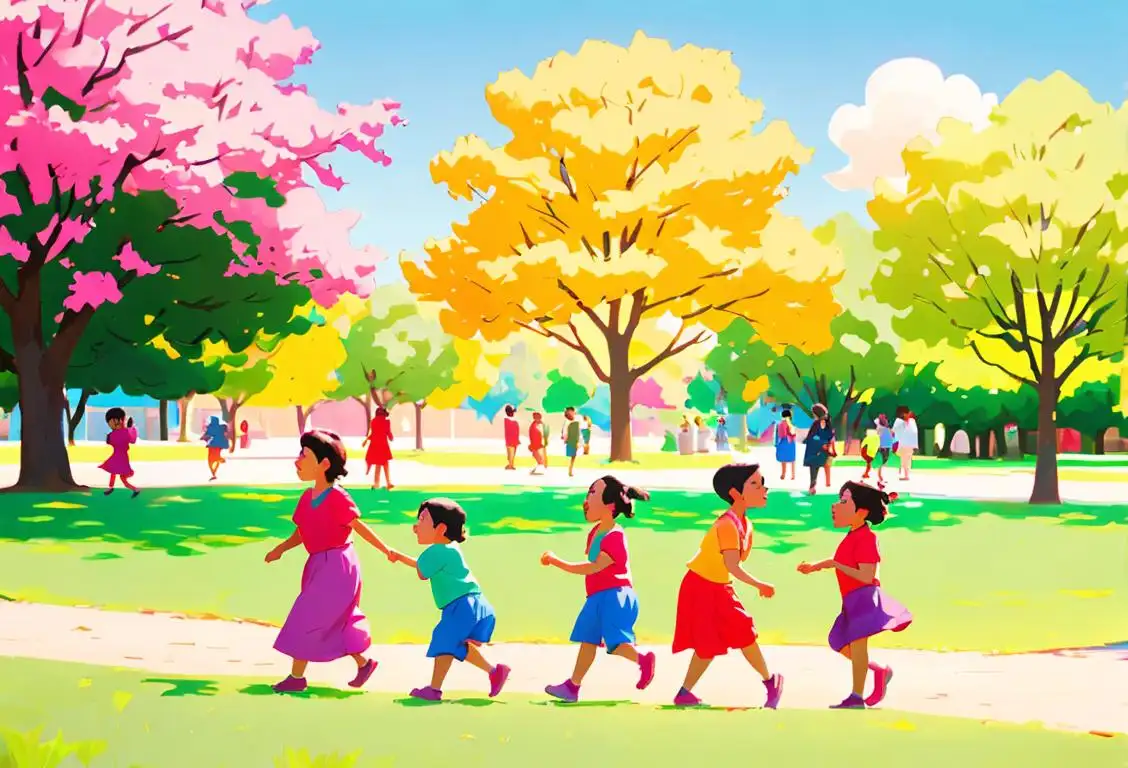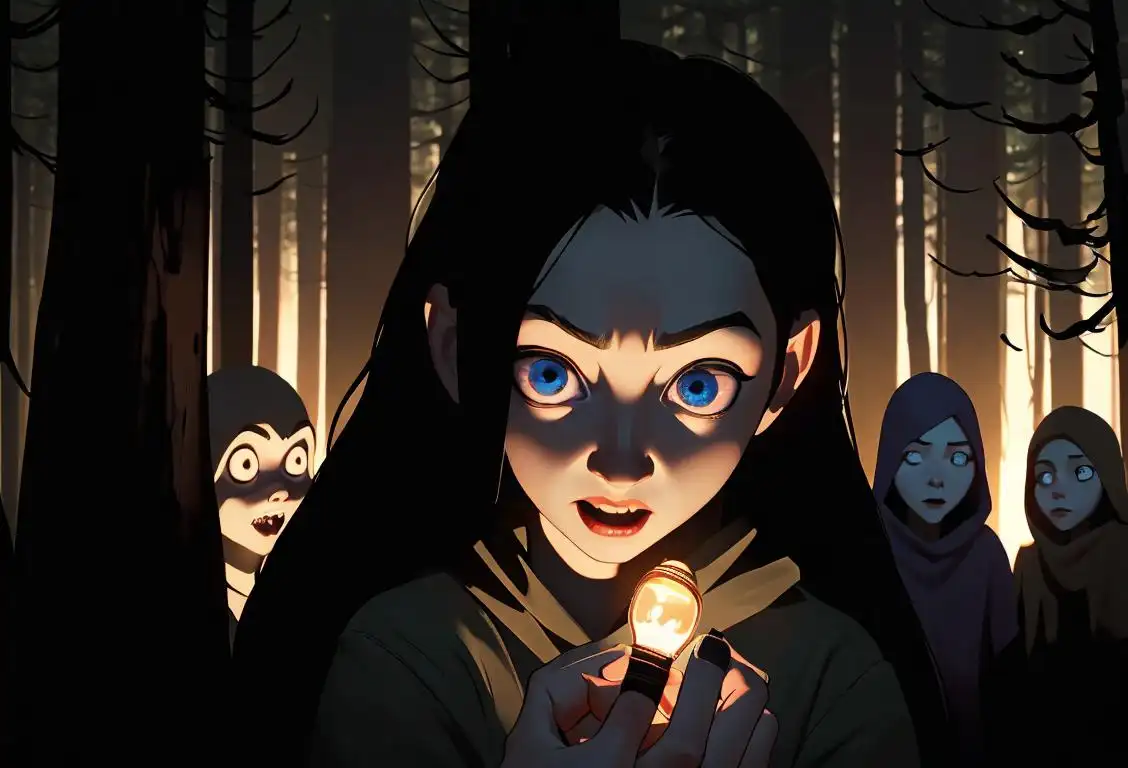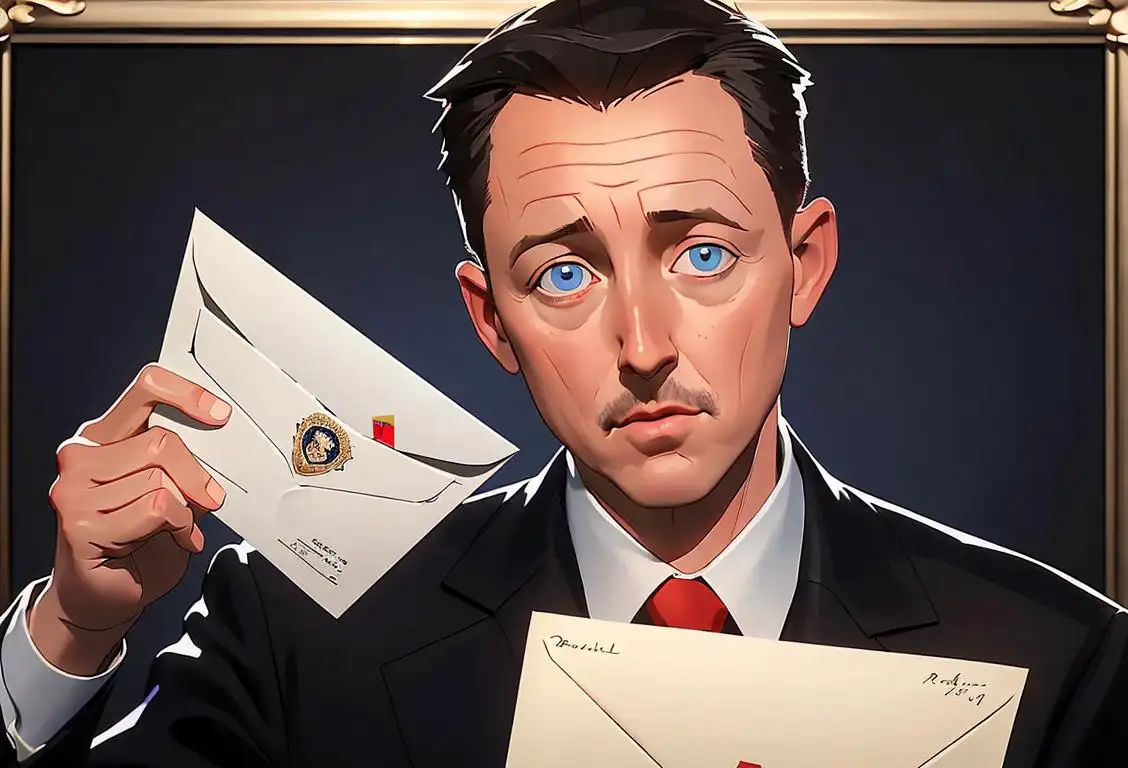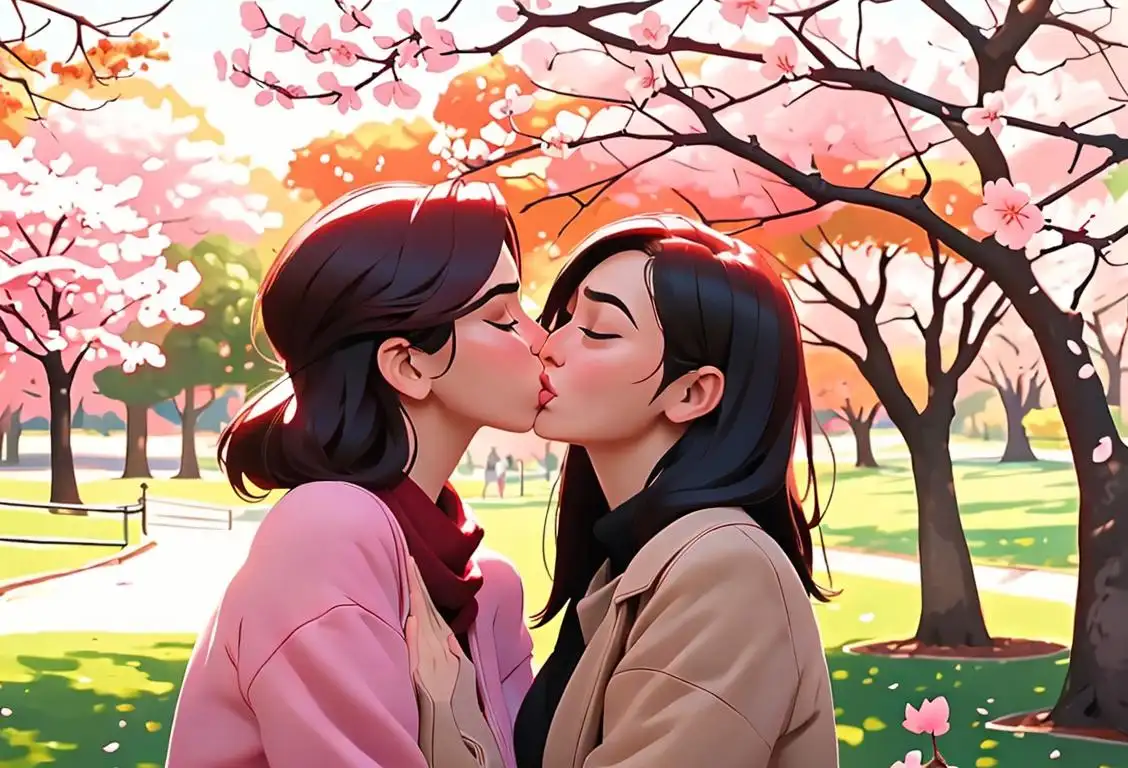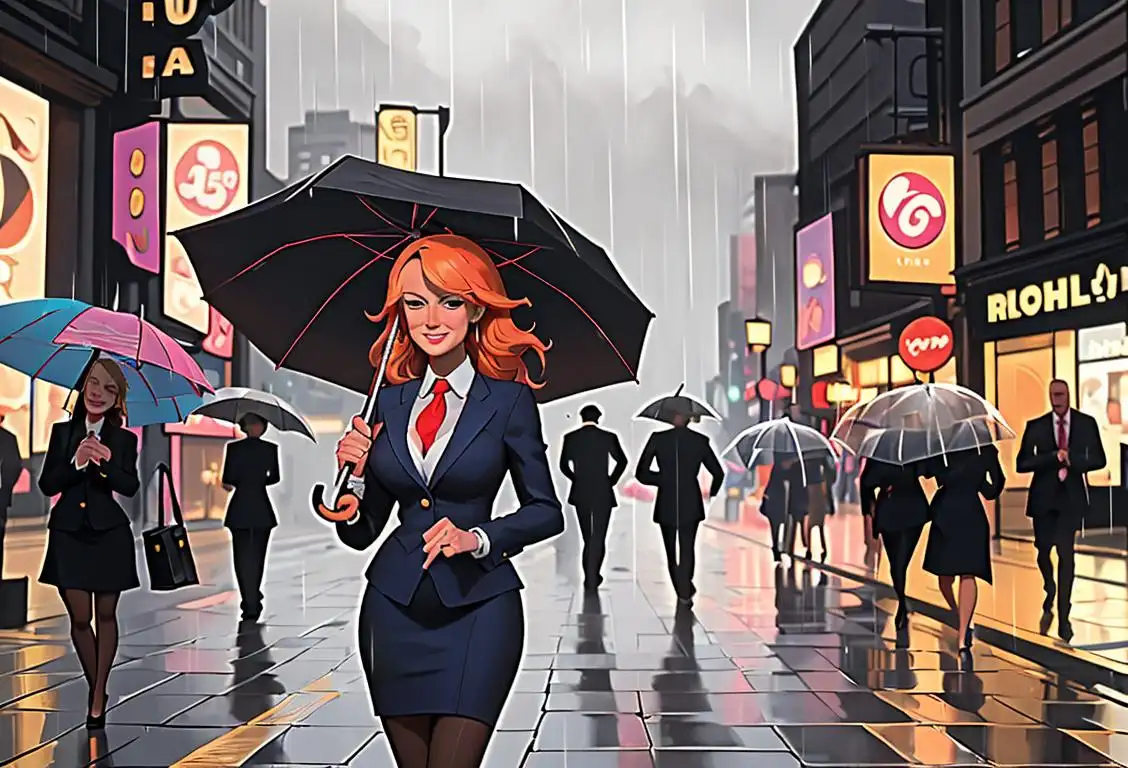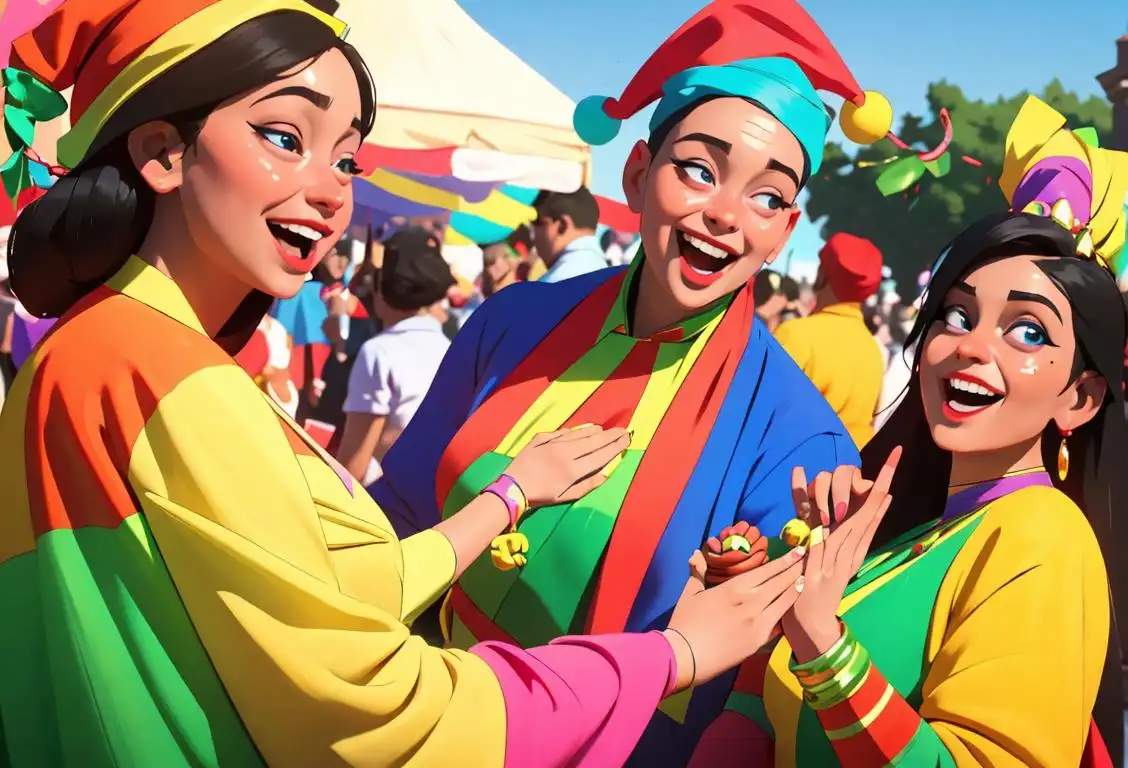National Moustache Day
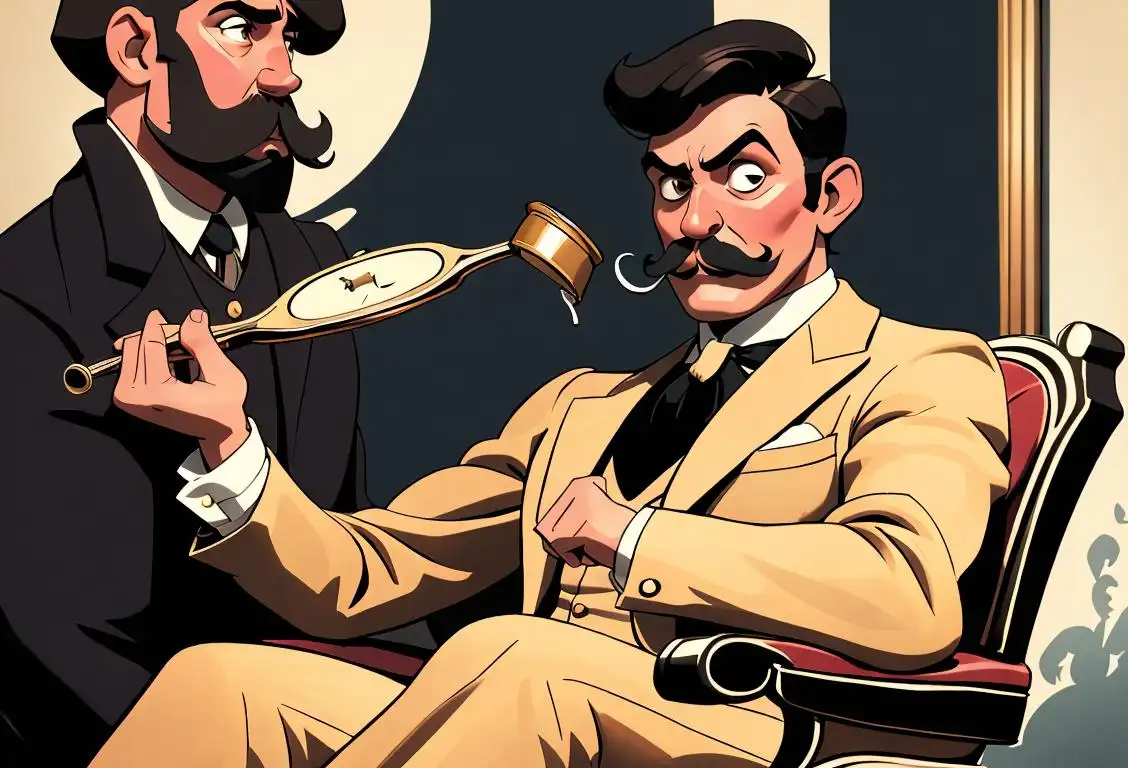
Welcome to the wacky world of National Moustache Day! Prepare to enter a realm filled with testosterone-fueled facial hair, gentlemanly charm, and an unbreakable commitment to mustache maintenance. If you're ready to embrace the upper lip fuzz extravaganza, then hop on board the whisker bandwagon as we explore the history, quirks, and absolute delight that is National Moustache Day.
When is Moustache Day?
It's national moustache day on the 22nd March.
Once Upon a Time in the Mustache World
Legend has it that National Moustache Day was born when a group of mustachioed individuals decided to honor and celebrate their furry face adornments. It all started back in the early 1900s, when mustaches ruled the world with swagger and style. These brave souls realized the need for one glorious day dedicated to the majestic upper lip bushes.
Over the years, the celebration gained momentum, fueled by an army of dedicated mustache enthusiasts who proudly showcased their follicular achievements. National Moustache Day became a platform for showcasing creativity, unity, and the power of a well-groomed soup strainer.
How to Celebrate in Style
Whether you rock a handlebar, a chevron, or a Fu Manchu, there are countless ways to celebrate National Moustache Day in style. Here are a few suggestions to get your follicles tingling with excitement:
- Organize a mustache-themed party complete with mustache-shaped cakes, mustache photo booth props, and a mustache grooming station.
- Host a mustache-themed trivia night where participants must answer hairy questions to win grand prizes like stylish mustache combs and grooming kits.
- Donate to a mustache-related charity or organization that provides support to those affected by facial hair discrimination.
Did You Know?
The Guinness World Record for the longest mustache ever recorded belongs to Ram Singh Chauhan from India. His upper lip masterpiece measured a mind-boggling 14 feet long! Now that's what we call a mustache with serious length.
History behind the term 'Moustache'
300 BCE
The Origins of the Moustache
Moustaches can be traced back to ancient times. The word 'moustache' is derived from the Greek term 'mustax', meaning 'upper lip'. In ancient Greece, a thick and bushy moustache was considered a sign of virility and masculinity. This facial hair style was often associated with warriors and military leaders.
300 BC
Ancient Beginnings
The term 'moustache' finds its roots in Ancient Greece. Starting around 300 BC, Greek soldiers known as hoplites would grow long facial hair as a mark of masculinity and intimidation. These prominent mustaches were often considered a symbol of power and dominance among warriors.
300 BC
The Ancient Greeks
In ancient Greece, moustaches were regarded as a symbol of masculinity and virility. Greek statues and literature depict men wearing moustaches, highlighting their importance in ancient Greek society.
300 BC
The Ancients: Birth of the Moustache
In ancient times, specifically around 300 BC, moustaches began to emerge as a prominent facial hair style. It is believed that the ancient Greeks were the first to embrace and celebrate the moustache. The term 'moustache' itself originates from the Greek word 'mustax,' meaning 'upper lip,' also representing the facial hair grown in that area.
Around 300 BC
Early Origins
Moustache, a term derived from the Greek word 'mustax', finds its roots in ancient times. During the Hellenistic period, Greek soldiers and statesmen began sporting moustaches as a symbol of masculinity and authority. These early moustaches were often modest in size and neatly trimmed.
400 BCE
The Ancient Origins
The term 'moustache' can be traced back to the 4th century BCE, during the time of the Ancient Greeks. The Greeks believed that facial hair bestowed wisdom and enhanced masculinity. They referred to the hair above the upper lip as 'mustax', which later evolved into 'moustache'. It was a symbol of power and virility, and many Greek statesmen and philosophers wore magnificent moustaches to showcase their authority.
300 BCE
Ancient Origins
The history of the term 'moustache' can be traced back to ancient times, specifically to 300 BCE. In Ancient Egypt and India, men were known to sport distinctive facial hair that resembled what we now call a moustache. These early moustaches were often grown long and curled at the ends, signifying strength and power.
16th Century
The Renaissance Influence
In the European Renaissance, moustaches experienced a resurgence in popularity. They were considered a fashionable accessory and a sign of social status. Men grew their moustaches long and elegantly styled, often waxing and shaping them into intricate designs.
300 BCE
The Roman Influence
In the 3rd century BCE, the Romans adopted the Greek culture and their grooming practices. The Roman Empire witnessed a surge in the popularity of moustaches, with Emperor Trajan being one of its most notable advocates. Moustaches became a symbol of military might and honor. Roman soldiers grew moustaches to distinguish themselves and display their bravery on the battlefield.
300 AD
The Middle Ages
During the Middle Ages, moustaches were associated with the military. Soldiers believed that growing a moustache increased their intimidation factor and made them appear more fierce in battle.
332 CE
Alexander the Great's Influence
In 332 CE, Alexander the Great conquered Egypt and introduced the concept of shaving to the Egyptian culture. Prior to that, Egyptians had embraced moustaches as a sign of prestige and virility. However, under Greek influence, it became fashionable to sport clean-shaven faces instead.
1096
The Crusades and the Rise in Moustache Popularity
During the Crusades, European knights encountered Turkish and Middle Eastern soldiers who sported well-groomed moustaches. Inspired by their sophisticated appearance, many knights began to grow moustaches themselves. This marked the beginning of the moustache trend in Western Europe, where it became a symbol of knighthood and chivalry.
16th Century
The Renaissance Revival: Moustaches Rekindled
After the decline of the moustache through the Middle Ages, the Renaissance period saw a resurgence in its popularity. During the 16th century, moustaches became a symbol of masculinity and power. Throughout Europe, from Spanish conquistadors to English monarchs, the moustache symbolized authority, nobility, and strength. The term 'moustache' gained wider recognition during this era as it spread across various countries and cultures.
14th Century
Middle Ages Fashion
During the Middle Ages, the term 'moustache' gained wider recognition as facial hair fashion evolved. In the 14th century, knights and noblemen sported well-groomed, curled mustaches called 'mustachio'. These elaborate styles reflected societal status and were meticulously maintained.
1700s
The Enlightenment Era
In the 18th century, moustaches became fashionable among European nobility. The Enlightenment era saw an emphasis on reason and individualism, with men growing elaborate moustaches to showcase their style and sophistication.
1600s
Moustache Goes Global
By the 17th century, the trend of growing moustaches had spread across Europe and other parts of the world. During this time, the term 'moustache' became more popularized and commonly used to refer to the facial hair specifically grown above the upper lip. The styles varied, from straight and narrow to wide and elaborate, based on personal preference and cultural significance.
19th Century
The Victorian Era: Moustaches in Fashion
During the 19th century, particularly in the Victorian era, facial hair, including the moustache, became an essential fashion statement for men. This period witnessed a shift towards various intricate moustache styles, such as the handlebar moustache and the walrus moustache. These elaborate styles required diligent grooming and became a mark of status, sophistication, and social class.
1700s
The Rise of the Moustache
During the 1700s, the moustache made its comeback in Western culture. European military officers, such as those in the armies of Frederick the Great of Prussia, began sporting moustaches as a mark of their status and authority. Moustaches soon became a symbol of nobility and masculinity.
1700s
The Moustache in the Age of Enlightenment
In the 18th century, the Age of Enlightenment brought about a cultural shift towards reason, science, and free thinking. Moustaches became a fashionable symbol of intellect and sophistication among European intellectuals and artists. Prominent figures such as Voltaire and Mozart were known for their iconic moustaches, which helped solidify the association between moustaches and intelligence.
1000 CE
The Medieval Shift
During the Middle Ages, moustaches began to lose their popularity in Western societies. The Church influenced the perception of facial hair, encouraging men to shave to maintain a more youthful appearance and avoid associating with the 'barbaric' styles of non-Christians. Moustaches were often associated with pagan cultures and were deemed unfashionable.
Late 18th Century
Military Influence
Moustaches gained further prominence through military culture. In the late 18th century, soldiers in various armies, such as the Prussian and British forces, adopted moustaches as part of their official uniforms. Moustaches were seen as symbols of discipline, dignity, and professionalism among military personnel.
1860s
The Victorian Era
During the Victorian era, moustaches were seen as a symbol of respectability and social status. Men would meticulously groom their moustaches, using wax and other styling aids to achieve the desired shape and fullness.
1800s
The Victorian Era and Moustache Etiquette
The Victorian era saw the rise of strict social etiquette, including specific guidelines for moustache grooming. Men were expected to keep their moustaches neat, trimmed, and well-maintained. Wax was used to shape and style moustaches, giving rise to elaborate styles such as the handlebar and the imperial. Moustaches became a symbol of social status and refinement during this period.
Late 19th Century
The Golden Age of Moustaches
The late 19th century witnessed the golden age of moustaches. This era saw an explosion of elaborate moustache styles, such as the handlebar, walrus, and pencil. Moustache grooming became an art, with men using an array of waxes, oils, and combs to maintain their facial hair.
1700 CE
The Age of Elegance
In the 18th century, moustaches underwent a revival as facial hair regained favor. European nobility embraced moustaches as a symbol of their social status and refined taste. Elegant handlebar moustaches became fashionable in France, while the English flaunted neatly trimmed versions. Moustaches became intricately styled and required meticulous grooming.
20th Century
World War Influence: The Military Moustache
As the 20th century dawned, moustaches underwent a change fueled by military influence. Soldiers from different nations, including the British, French, and German forces, sported moustaches as part of their uniformed look. During World War I, moustaches became a symbol of courage, strength, and camaraderie among soldiers on the battlefield. The moustache became an iconic representation of the military man.
19th Century
Victorian Era Elegance
The Victorian era marked a significant shift in men's grooming habits and the cultural perception of moustaches. In the 19th century, having a well-trimmed and elaborate moustache was considered a sign of refinement and masculinity in Western societies. Many men styled their moustaches neatly, often using waxes and pomades to maintain their shape.
1860s
The Handlebar Moustache Craze
The 1860s marked the peak of the handlebar moustache craze. This style featured long, curved ends that resembled the handlebars of a bicycle, hence the name. It became particularly popular among upper-class gentlemen in Europe and the United States and was often associated with wealth and sophistication.
20th Century
Moustache Movements
The 20th century witnessed diverse moustache trends, influenced by prevalent cultural movements. From the thick and bushy mustaches of the Victorian-inspired 'Edwardian' era to the pencil-thin styles popularized by Hollywood icons like Clark Gable in the 1930s. Various mustache styles symbolized different ideals, including masculinity, sophistication, and rebellion.
1900s
The Movember Movement
In the 21st century, the term 'moustache' gained additional significance due to the global Movember movement. Movember, which originated in Australia in 2003, encourages men to grow moustaches throughout November to raise awareness and funds for men's health issues such as prostate cancer and mental health.
1920s
Silent Film Stars and the Movember Movement
In the 1920s, the moustache gained tremendous popularity through the influence of silent film stars like Charlie Chaplin. Chaplin's iconic toothbrush moustache became a global trend. Interestingly, in recent years, the month of November has been designated as 'Movember' to raise awareness for men's health issues, encouraging men to grow moustaches throughout the month.
1880 CE
The Golden Age of Moustaches
The late 19th century was considered the golden age of moustaches. During this period, men took great pride in their facial hair, and moustaches became monumental. The most iconic moustache style emerged – the thick and bushy 'walrus moustache', which extended beyond the edges of the mouth. Prominent figures like Mark Twain and Friedrich Nietzsche sported this iconic style, giving it widespread recognition and popularity.
20th Century
Decline and Resurgence
The early 20th century marked a decline in moustache popularity, as clean-shaven faces became more fashionable. However, moustaches experienced a resurgence in the 1960s and 1970s, driven by counterculture movements and iconic figures like Salvador Dalí. The modern era continues to embrace moustaches as a symbol of personal style and individuality.
1900s
The Decline and Resurgence of the Moustache
In the early 20th century, the popularity of moustaches waned as new trends emerged. The clean-shaven look became more fashionable, and moustaches were often associated with older generations. However, there was a resurgence in moustache popularity during the 1970s and 1980s, when iconic figures like Tom Selleck and Burt Reynolds popularized the rugged and masculine image associated with thick moustaches.
21st Century
Moustaches Meet Movember
In recent years, the moustache has experienced a cultural resurgence and gained new significance. The term 'moustache' has become linked with the annual event known as 'Movember,' short for 'Moustache November.' Movember encourages men to grow their moustaches during the month of November, raising awareness for men's health issues, particularly prostate and testicular cancer. This movement has brought the moustache back into the spotlight, uniting communities and promoting important causes.
21st Century
Moustache Revival
In recent years, the moustache has experienced a revival, thanks in part to movements such as 'Movember.' The term 'moustache' continues to evolve and adapt, with individuals showcasing an array of creative styles during November to raise awareness for men's health issues. This modern-day celebration of the moustache demonstrates its enduring cultural significance and the ability to create positive change.
Present Day
A Symbol of Individuality and Style
Today, the moustache has become a versatile fashion statement, reflecting individuality and style. Movember, a global charity movement that encourages men to grow moustaches during November, has contributed to the moustache's modern-day significance. It serves as a symbol of support for men's health issues, such as prostate cancer and mental health. Whether maintained for cultural, fashion, or charitable reasons, the moustache continues to endure as a distinctive facial hair style.
20th Century and Beyond
Moustaches as Symbols
In the 20th century, moustache styles varied significantly across cultures. From the pencil-thin line worn by Charlie Chaplin to the flamboyant Salvador Dalí's curled moustache, different styles reflected personal expression. Moustaches became symbolic of cultural movements like Movember, an annual event promoting men's health awareness. Today, moustaches continue to be a unique form of self-expression and a reminder of their historical significance.
Did you know?
Did you know that Mark Twain once said, 'A man without a mustache is like a cup of tea without sugar'? So, if you're feeling a bit bitter today, maybe it's time to grow a sweet stash!Tagged
awareness nsfw funFirst identified
22nd March 2015Most mentioned on
22nd March 2015Total mentions
7Other days
Children Day
Nightmare Just Day
Intelligence Richard Grenell Has Declassified A Mysterious Inauguration Day
Happiness Day
Awareness Day
Kisses Day
Opposite Day
One Day
Stormy Daniels Day
These Day
